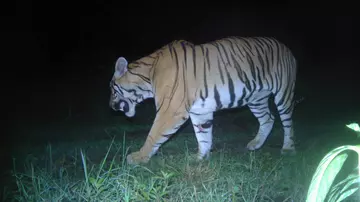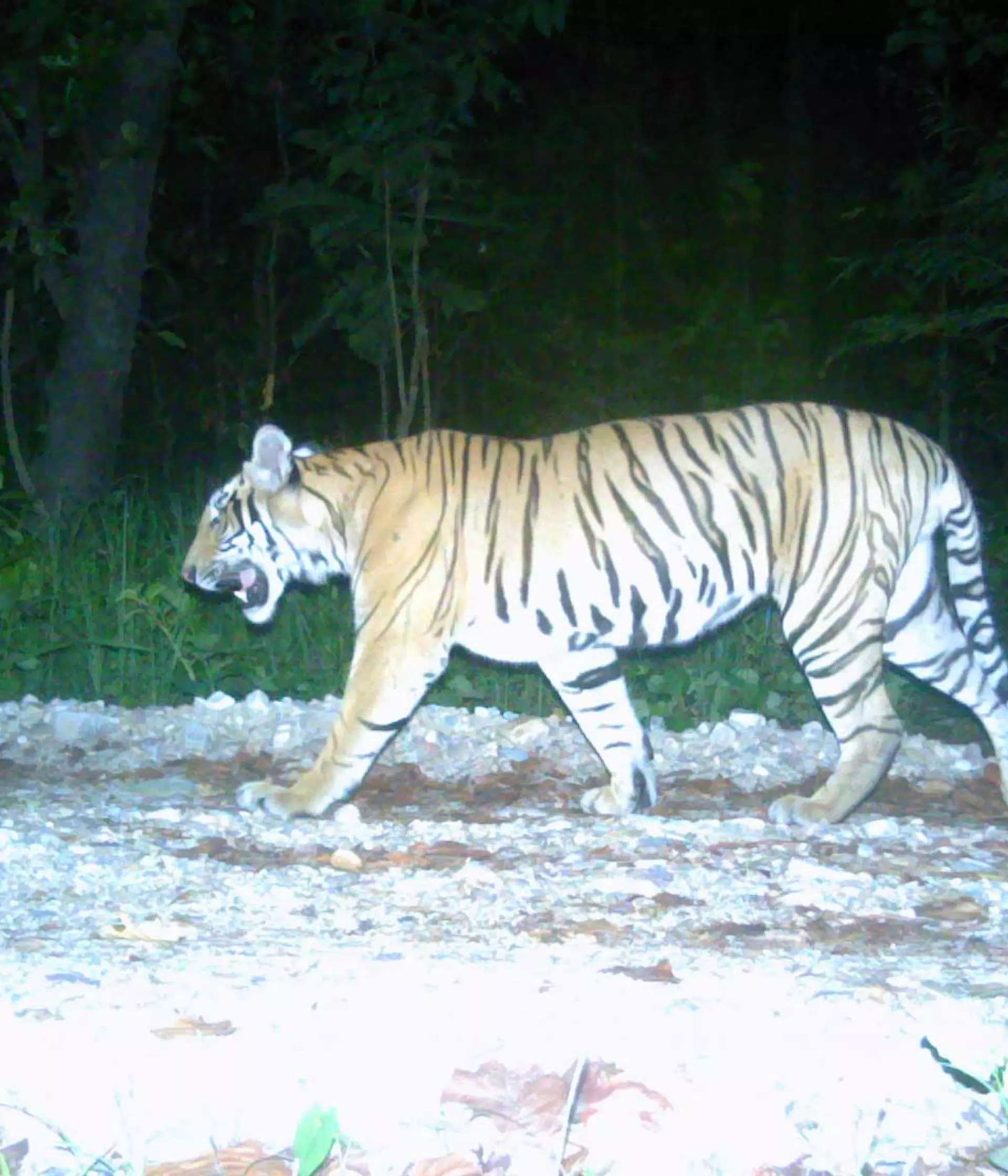
Bengal tiger conservation across borders
With the recent news that the numbers of wild tigers have doubled in Nepal, Deputy Country Manager for ZSL Nepal conservation projects, Bhagawan Raj Dahal tells us about recent cross boundary meetings between local communities and conservation managers in India and Nepal, and how these will support everyone involved in tiger conservation work.

Working together with the ITHCP
Transboundary cooperation has been an integral part of the ITHCP (Integrated Tiger Habitat Conservation Programme) project working to increase and maintain tiger populations and foster human-tiger coexistence in India and Nepal.
The two countries have an administrative border in the Terai Arc Landscape, which is one of the most fragile, but also one of the most biologically diverse eco-regions in the world, hosting 17% of the world’s tiger population. The border sharing countries are critical movement areas for large, endangered animals including the Bengal tiger, one-horned rhino, and elephants. It shares similar conservation issues including habitat loss and degradation, poaching and human wildlife conflict.
Bringing species back from the brink

We know that tigers use transboundary habitats- moving in between Chitwan National Park and Parsa National Park in Nepal to Valmiki Tiger reserve in India. Also Bardia National Park in Nepal to Katarniaghat Wildlife Sanctuary in India, and Shuklaphanta National Park in Nepal through Brahmadev corridor to Lagga-Bagga Reserve Forest and Nandaur Wildlife Sanctuary in India.

With wildlife frequently crossing borders and facing similar conservation issues across both countries, ‘transboundary cooperation’ has been given a key role in the ITHCP project, leading the way towards better cooperation between conservation project leads and local communities.
As part of this work, various events have been organised with the participation of community and conservation officials from both Nepal and India including coordination by Dr. Harish Guleria, ZSL Conservation Project Manager in India. These events include three recent, key meetings. which have focused on knowledge sharing of wildlife conservation issues, strategies, and specialised livelihood improvement trainings for community members, which are aimed at helping to support those living on the borders of forests and other wild spaces.
To foster inter-country conservation management, the first ever transboundary training for conservation managers, the Trans-Boundary Training Course in Wildlife Conservation and Management for Protected Area Managers of India and Nepal was held from the 8th to 12th of August in the Wildlife Institute of India (WII) in Dehradun. The training focused on challenges of biodiversity conservation, habitat management and human wildlife conflict in the Terai Arc Landscape. It was a key moment to discuss conservation strategies adopted by each country and how effective they’d been. The training also helped to highlight areas predicted to have higher conflict in the future. Trainers and participants stressed the importance of working together, saying that regular interaction and intelligence sharing between the managerial staff of both the countries to combat and resolve conservation issues, was key.

Supporting communities living with tigers
In our efforts to continue support local communities residing in the buffer zone of both the countries, a Transboundary Training Course for the Famers of India and Nepal was also held at Govinda Ballabh Pant University of Agriculture and Technology (GBPUAT with the technical expertise of world class Govinda Ballabh University. Activities from past ITHCP projects has shown that livelihood improvement of the communities living around buffer zone has been one of the most effective ways to help support and strengthen wellbeing as well as boost a desire to engage in tiger conservation.
The training was to enable farmers to better understand issues and problems related to sharing their land with wildlife, and provided those from both countries with new practices, tools, and methods that could be used to increase their profit from agriculture. The training also aimed to facilitate knowledge sharing between farmers from each country, so that they could share their own tactics for living alongside wildlife while maintaining their livelihoods.
Transboundary programs such as these really highlight how important every stage of conservation is. From managerial positions to local communities- all parties are key building networks that transcends borders, enabling information flow among authorities and communities and harmonising relationships between people and wildlife. They also help to increase the confidence of the communities in tackling the social issues associated with wildlife conservation. Transboundary avenues are crucial in learning what has work and what doesn’t when it comes to collaborative conservation in the 21st century.
As the original science-led conservation organisation, we’re driving forward a journey of recovery for the planet, to restore the wonder and diversity of life everywhere. From rhinos or dormice, we are always there for nature. Join us on our journey to build a more balanced and connected world.
